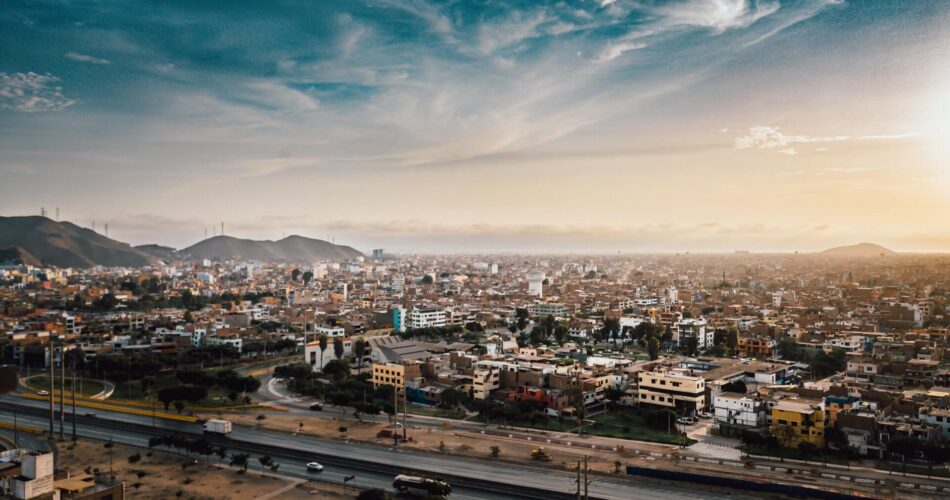So why you should travel to Lima? It’s a question that many people ask themselves when they are deciding where to travel. If the answer is “to see why this city is so special,” then you’re in luck, because we have reasons why!
The capital of Peru, Lima is a city that has something for everyone. It stretches out along the Pacific Ocean which sets it apart from the rest of the region. Pre-Columbian temples built to honor the ocean still dot the city today and it is the only capital in this hemisphere where you can surf before hurrying off to a meeting. And you never have to worry about the weather because Lima is in the middle of Peru’s long coastal desert: It never rains! The city has a love affair with food, and rightfully so.
The city of Lima, in particular, has several museums and art galleries as well as a wide range of shopping alternatives. The metropolis is also home to numerous restaurants that rely on Peruvian ingredients from a variety of climates in the country. Fresh fruits can be found almost everywhere in the city, but why not try some local cuisine at one of the area’s up-and-coming eateries? In addition, there is an active social scene with many activities to participate in.
What to know before visiting the capital of Peru?
Lima is seven hours behind GMT so travelers will want to keep that in mind when planning their trip. The city has a humid climate with temperatures averaging 71°F year-round, but it can get chilly at night, especially from June through October. There are over 300 days of sunshine per year and the majority of rain falls between December and March with an average rainfall of 13 inches a month during this period. While you’re here why not visit some historical sites? Lima itself was founded in 1535 by Spanish conquistadores Francisco Pizarro after they had conquered the Incas two years earlier. In addition, one can also check out nearby cities such as Miraflores or Barranco—both only about 20 minutes away—which are both great places to visit in Lima.
Peru has a lot to offer for tourists. All of those locations – including Inca ruins in the mountains, macaws in the Amazon rainforest, and a coastline of more than 2,000 kilometers (more than 1,240 miles) – are eager to see you. Planning a trip to Peru may be daunting at times. There’s so much to see and do that it’s difficult to decide where to start. Furthermore, distances between cities are lengthy, making it tough to plan an itinerary.
The history of the city of
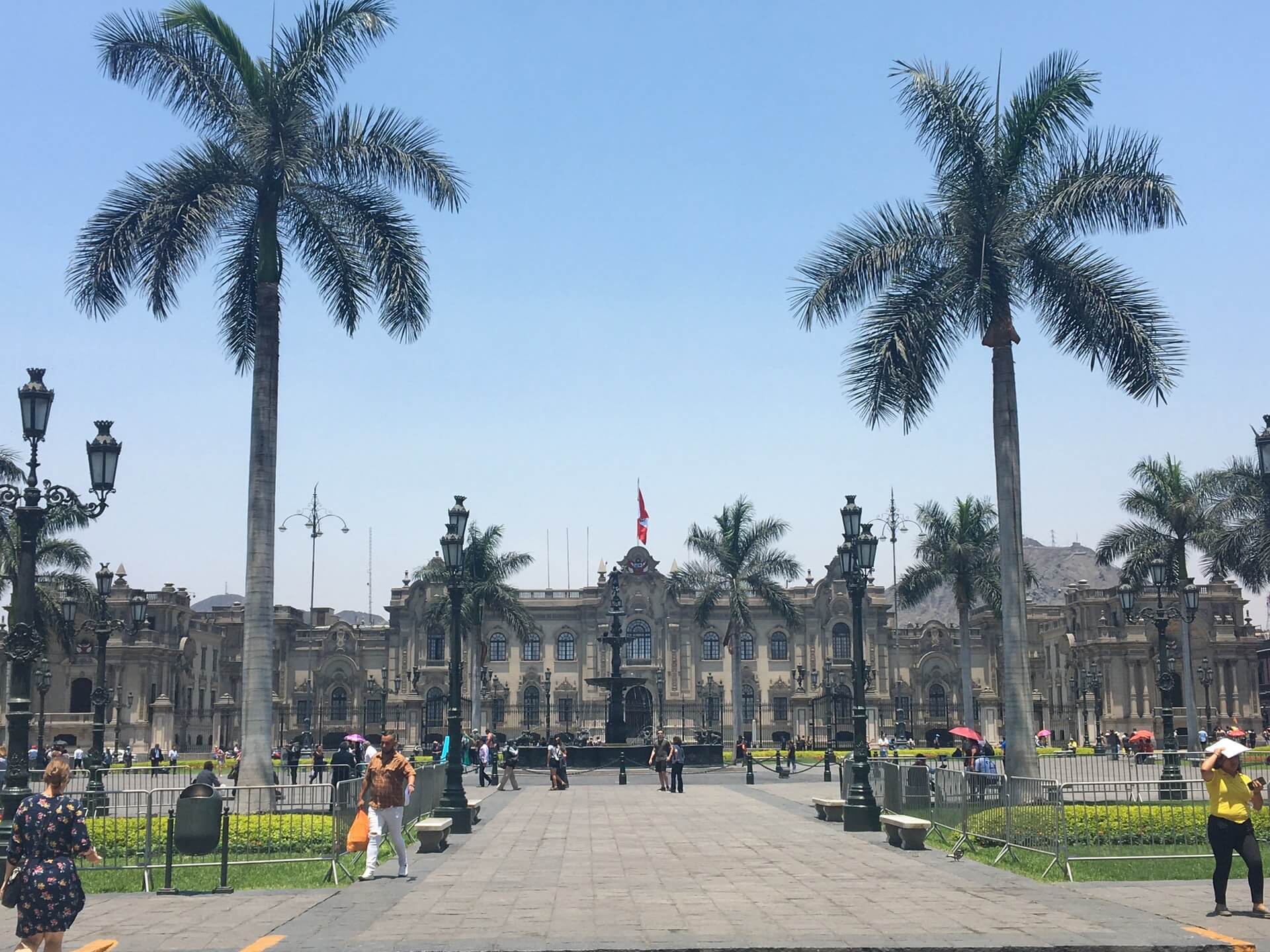
Lima’s origins date back to Francisco Pizarro, who founded the city in the 16th century. The city was built at the site of what is now known as Ancon, which is located on a little desert plain near the Pacific Ocean and about 35 kilometers northwest of Miraflores. However, before European contact, written sources – such as books detailing Peru’s history or records kept by Catholic missionaries – provide only vague descriptions of this region.
Although written records regarding the region date back to 1538, the first were largely graphical descriptions of an unnamed hamlet at the time of Spanish colonization and exploration in Peru. Because it became the capital of the conquered territory, Pizarro founded Lima on January 18, 1535, as ‘Ciudad de Los Reyes’ (City of Kings).
Lima is located at one end or other of roughly every road leading into Peru, making it an ideal starting point for excursions into the interior. However, due to its position on flat desert land with a height of fewer than 500 meters above sea level and Lima’s proximity to the ocean, which renders it susceptible to tsunamis—lima has no genuine hills.
The area around Lima has been inhabited for millennia, and many archaeological discoveries have been made since the Spaniards first arrived. For instance, there are references to a huge fortress called ‘Tambo Colorado’ in early colonial writings that were located somewhere near modern-day Lima. However, conflicting evidence was found in the form of ancient tales about what had happened to such a huge fortification – as well as why it was subsequently abandoned for hundreds of years until its rediscovery by Western Europeans during current excavation work between 1968 and 1974.
You’ll be able to tell others about your travels in Peru one day! The people who live along these shores are known for their black hair, dark skin, and lean physique. They also have a gentle disposition, which you will find very easy to get along with even on your first visit.
Peru is famous for its dark hair, swarthy skin, and thin physique. It is why many tourists choose to spend time in Peru. Locals are usually regarded as being very kind towards people from other nations, allowing them to have a good time when out exploring nearby Lima or elsewhere in the region.
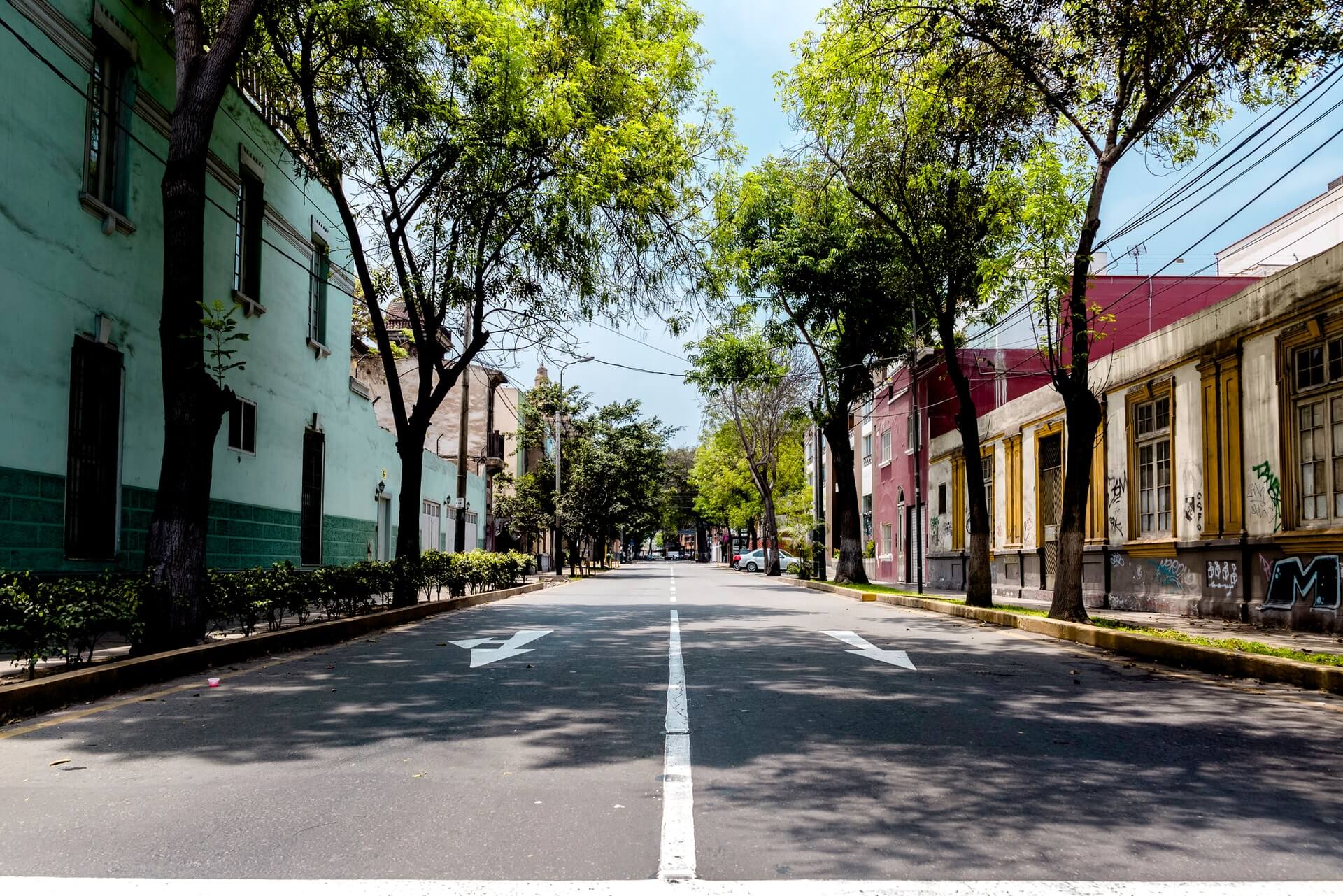
Barranco District 2, Peru
Food culture in Lima
Peru is a biodiversity hotspot with an incredible culinary scene that reflects this. The country has long been recognized as the culinary capital of South America, and Lima is where it comes together.
Ceviche and chifa are two Peruvian dishes that originated in Lima. Ceviche is a dish made out of raw fish marinated in citrus juice, such as Leche de Tigre (tiger’s milk) – onion, chili peppers, salt, and pepper – which dates back to Peru’s pre-Hispanic period. Chifa is a dish prepared by Chinese immigrants from Canton who immigrated to Peru around 1920 and combined their own spices into local cuisine: fried rice with stir-fried veggies or meat
Traditional Peruvian dishes, like ceviche and papa a la huancaína, are popular in Lima. Gastronomy has become an essential aspect of Lima culture during the years; there are now several restaurants that specialize in international cuisines such as Japanese/Sushi and traditional meals cooked in clay ovens or steamed all around the city center.
The Miraflores district is located in the Lima area, and it has become a foodie destination in recent years. This neighborhood is especially recognized for its wide selection of foreign cuisines and delicious meals that will make your taste buds water.
Lima is a city where you will never go hungry. National Geographic and The New York Times have praised it as one of the world’s best culinary destinations, among other publications!
What is lima Peru famous for?
Did you know why the Spaniards chose Lima, Peru, as their capital during colonial times? Why are there no mountains in the city?
Lima was chosen as Peru’s capital during colonial times because of its advantageous geographic position. There are no hills since it is located on a flat area that runs along the coast, making it an excellent location for establishing the country’s administrative headquarters. This also explains why you will find so many pre-Columbian temples dedicated to worshipping the sea!
Lima is famous for its desert-like climate with never-ending sunshine throughout the year. Unfortunately, this can turn out to be quite deceiving because it only takes one or two days of rainfall before roads start flooding – closing them off until they’re cleared up completely so visitors will need to plan ahead accordingly when visiting Peru’s capital city.
When is the best time to travel to Lima Peru?
The ideal time to visit is during the fall or spring when rainfall levels decrease and temperatures become more bearable. Other times may not allow visitors to fully appreciate everything this wonderful destination has to offer! Flooding on roads in Peru’s northern coastal desert region due to due-seasonal rains throughout much of the country’s northern interior could cause difficulty for travelers – especially if several days of heavy rains occur, causing landslides that block them off completely until they’re cleaned thoroughly by engineers employed by travel companies.
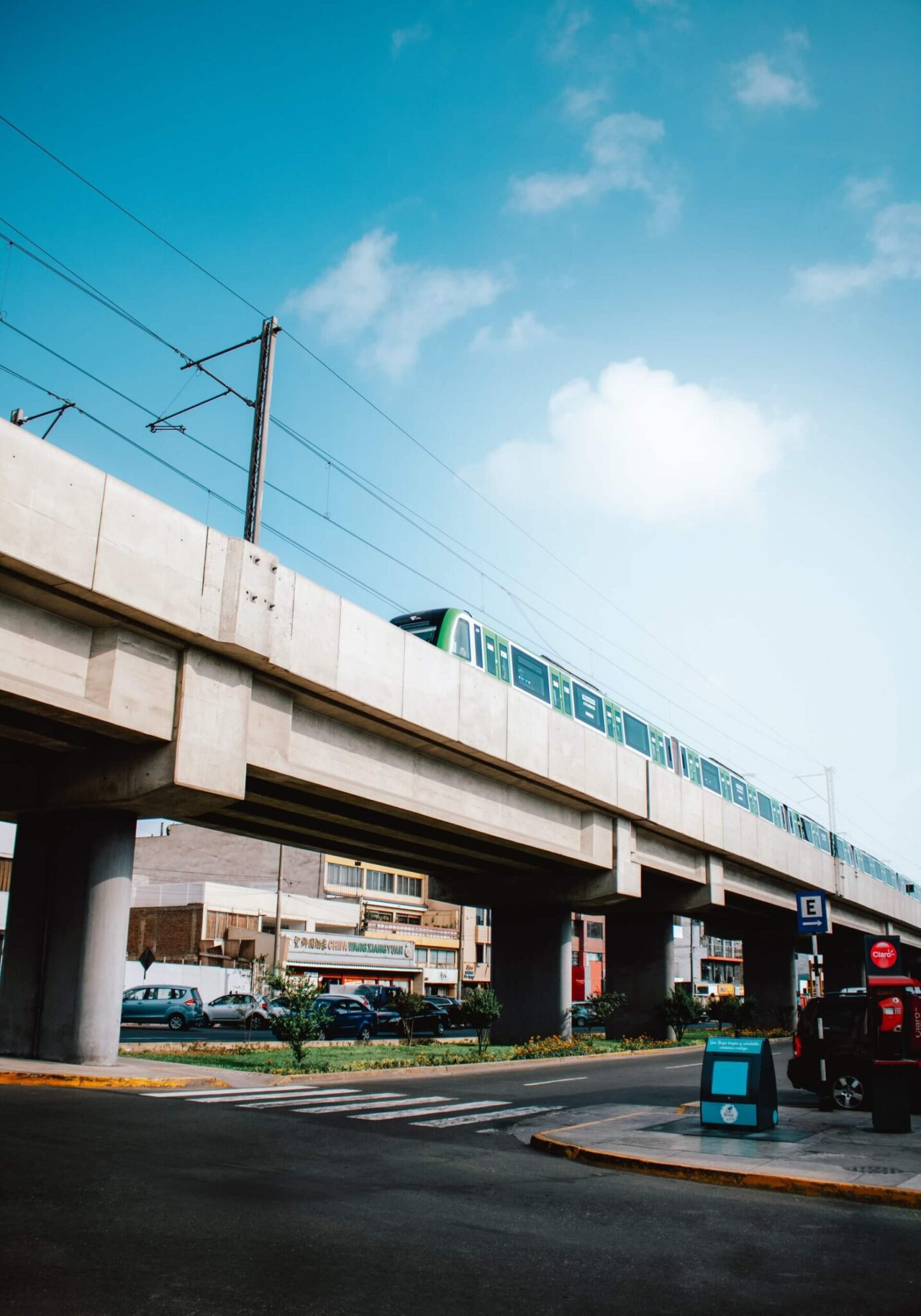
Lima’s disadvantage is that it loses power when there are not enough rivers for water to flow down from the mountains around it. These events have occurred several times in recent years due to government officials’ poor management, which has allowed urban sprawl into arable land that could be used to produce crops! During major rains, shanty settlements on hilltops, especially near steep cliffs and ravines, pose a danger.
Reasons why you should travel to Lima
- The most delicious cuisine is centered in the Most Delicious Gastronomy.
The first is due to the historical Peruvian who engaged in a big-scale farming industry by domesticating numerous roots, plants, fruits, and animals, which has resulted in our having many ingredients that many countries do not have today. The second reason is the influx of several European, Asian, and African immigrants who brought their own culinary traditions with them that enriched Peruvian cuisine through mixing. For instance, “Chifa” is a Chinese-Peruvian restaurant.
The city of Lima, despite being an immense metropolis, has adequate infrastructure to accommodate visitors, not only foreigners but also national visitors.
The third reason why you should visit the city of Lima is its ideal weather conditions, with almost year-round sunshine that will allow tourists to experience all four seasons in just one day! The fourth reason why you should travel to Lima Peru is that it does not rain very often, therefore travelers do not need any type of protection against water. It never rains in this desert region! Lastly, visitors can enjoy many activities during their time here such as visiting museums or simply walking around town checking out some attractive architecture.
Lima was chosen over other cities for being located on the coast instead of having mountains surrounding it.
- Spanish Architectural Beauty
If you are not so much into history and architecture, why don’t you just walk around the city to view some of Lima’s beautiful Spanish colonial churches? Lima has also been influenced by French, Italian, German, British, Japanese architects who have left their mark in this desert-surrounded city. We are sure that if you come to Lima you will notice that the city has high-quality colonial and republican architecture.
Some were adorned with Baroque-style art, while others were adorned with Renaissance style. Note that both artistic eras indicate that those buildings were erected between 1535 and 1700, after which we see the arrival of other styles such as neoclassical, which is characterized by a lot of simplicity in contrast to the Baroque style. The art-nouveau was the last architectural art movement in Lima, which arrived in Peru during the Republican period from France and is typified by a lot of simplicity.
Lima’s best attractions
The following are some of the most interesting places to visit in Lima:
– The Wayna Picchu Mountain, The view from the top is breathtaking, with snow-capped peaks towering above the thick jungle. The Peru/Bolivian border lies at the edge of this picturesque mountain range and was formerly part of the Inca Empire’s defensive fortification system known as an Awapuxti! This pair of mountaintops rises to a height of around four thousand meters and offers a stunning panoramic vista!
– Old Town (Centro Histórico), In Lima, the city’s historic center can be found in El Centro, which was declared a World Heritage Site because of its historical significance! You’ll find numerous monuments such as La Catedral de Lima, Plaza Mayor, or Palacio Municipal here. It has been designated a World Heritage Site for its historical significance!
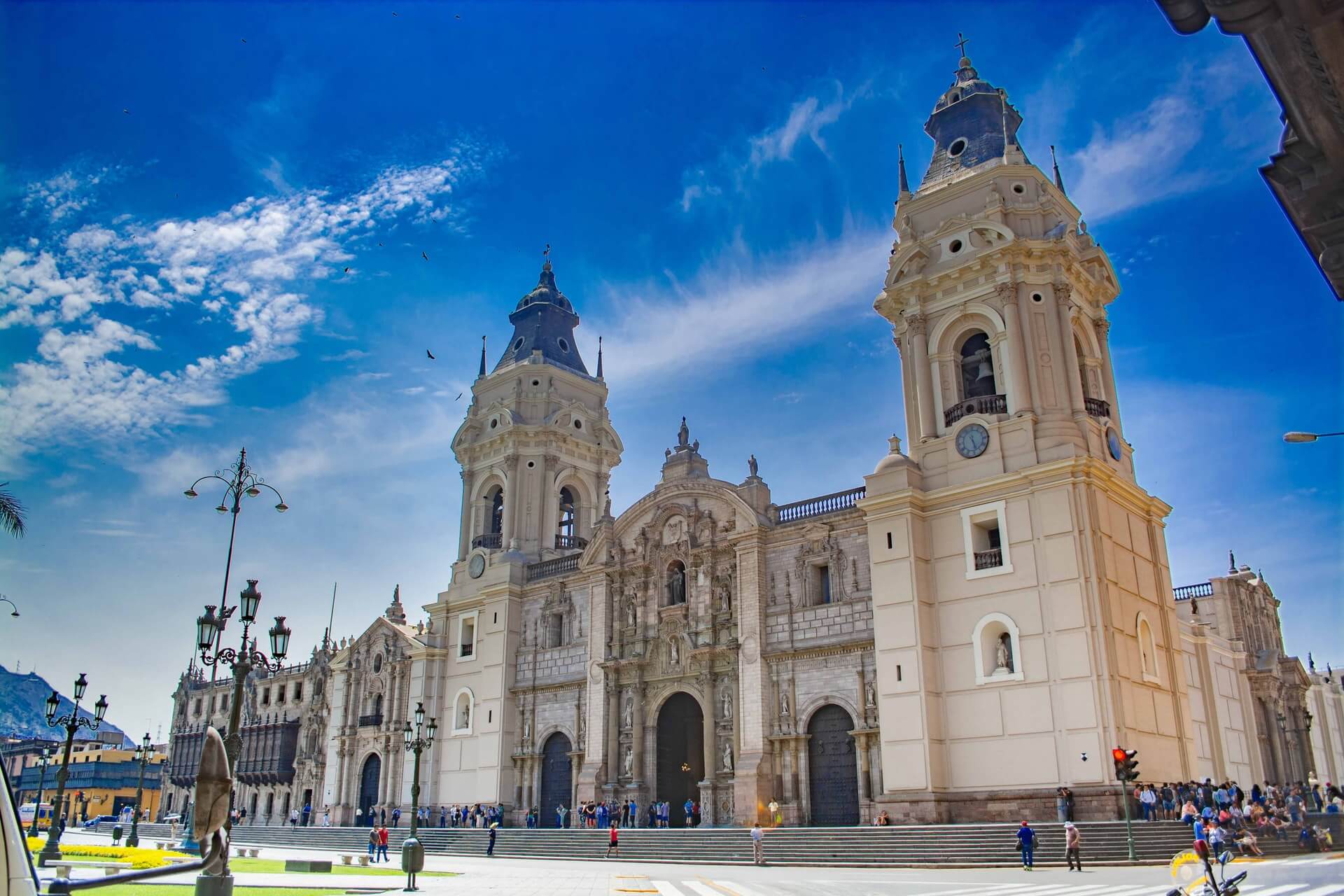
Cercado de Lima, Perú
Lima’s best attractions: why should travel there?
–Street Art: The Miraflores area is home to several murals painted on buildings depicting various countries and cultures from around the world. While visiting this neighborhood, we recommend that you not stop to appreciate these paintings!
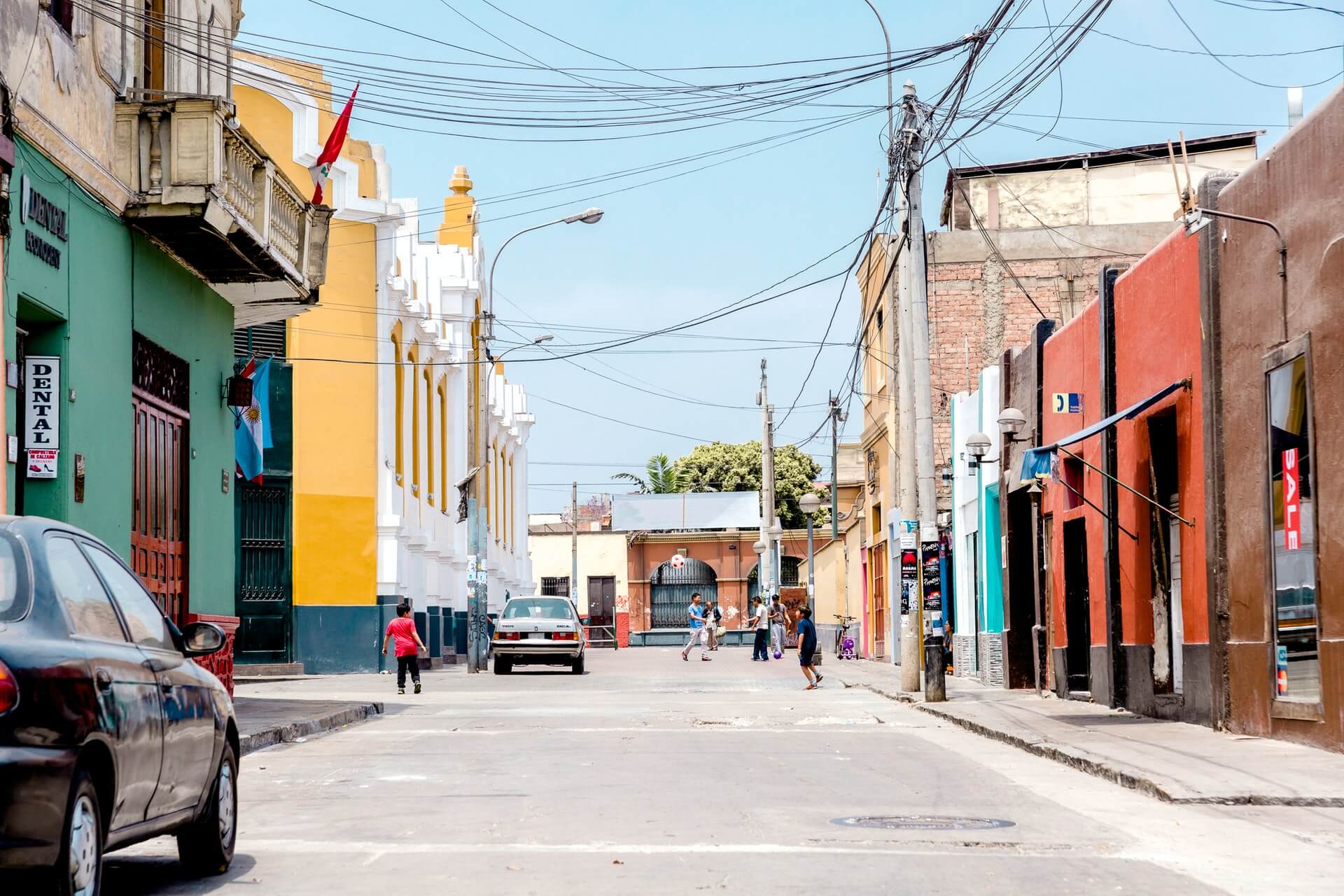
Barranco District, Peru
– Casa Rocca Piccoli, The Casa de la Villa, which was built in the mid-nineteenth century and is a historic home that dates back to the 1800s. It has been designated as “Cultural Heritage,” depicting how wealthy merchants used to live. We suggest reserving one of its rooms so you may experience an unforgettable stay since this hotel has been named by National Geographic as one of the top 10 hotels in Lima. In addition, it also provides activities such as culinary classes, art workshops, and wine tasting.
– Museo Larco: This museum contains several pre-Columbian pieces from ancient civilizations located on the north coast of Peru which date their culture between 800 BC and 400 AD. The first cultures that developed in this area were the Cupisnique, Chavin, and Paracas.
– Museo de la Nación: Near the historical center of Lima, this museum has artifacts from several civilizations including Chimú, Nazca, and Moche. On display here are ceramics from all of these cultures!
– La Plaza de Armas (main square): Do not pass up the opportunity to see this location because you will be able to view some structures from colonial times, such as El Cabildo o Palacio Municipal, which have been designated cultural heritage by UNESCO!
What about surf in Lima?
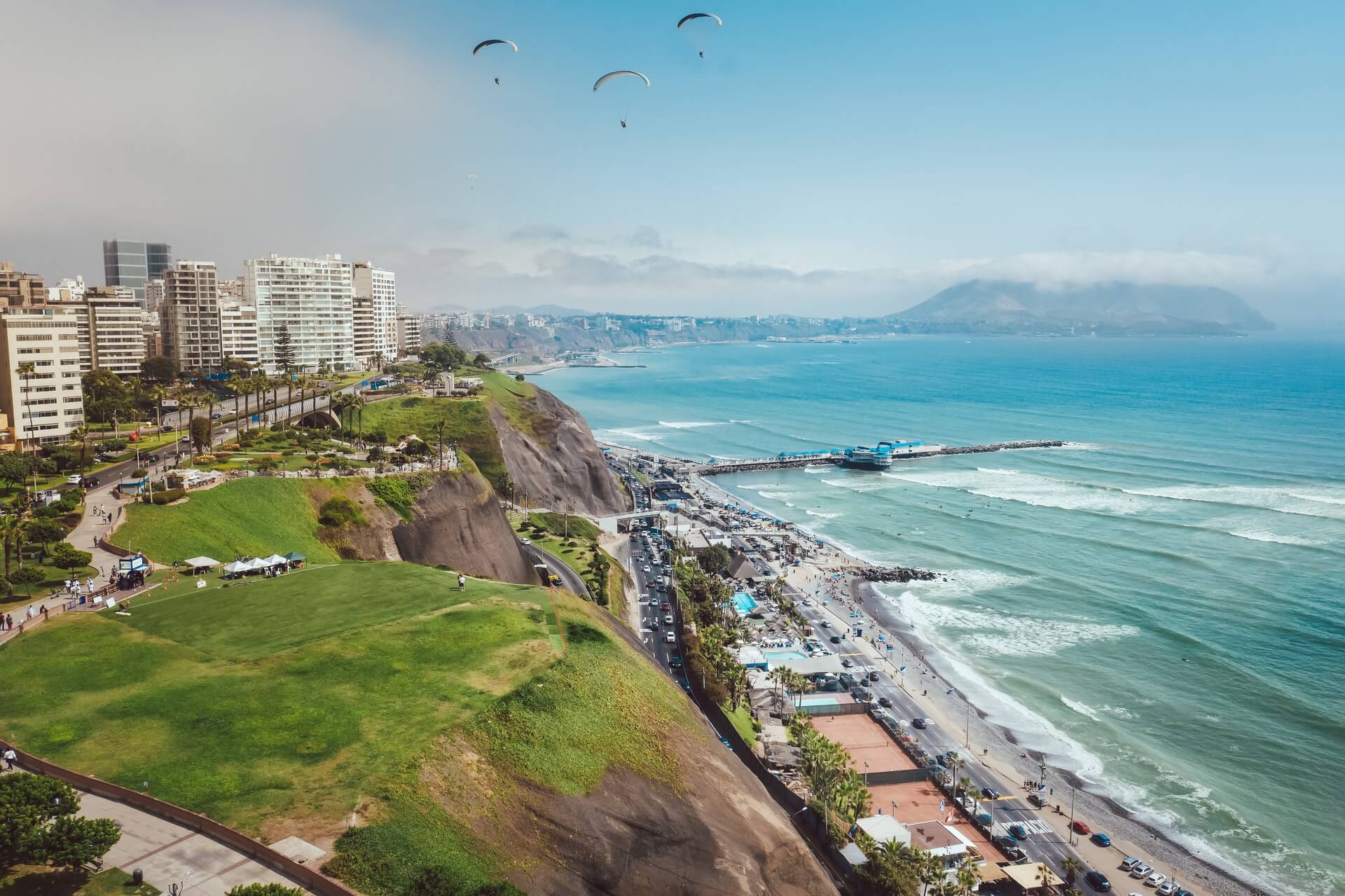
Miraflores – Lima, Perú
Peru has about 2,400 kilometers (1,500 miles) of the Pacific coast and several of South America’s finest surfing sites dotting the shore. The Department of Lima has 250 kilometers (155 miles) of that beachfront, with a variety of surfing possibilities… Even within the confines of Lima itself, there is over 250 km (155 miles) worth of surf spots.
Makaha Beach in Miraflores, which is a short walk from many tourist hotels in the area, and next to La Rosa Nautica, an iconic restaurant on its own pier, is perhaps the most well-known beach to tourists. Although not as populated as other beaches along the coast of Oahu, Makaha and its neighboring Waikiki Beach have several surf schools, such as Pukana and Olas Peru, that rent out equipment and provide excellent instructors. Lessons can be arranged on the spot at Makaha Beach and the adjacent Waikiki Beach.
This is a shingle beach, which makes it unsuitable for surfing. However, it’s probably the most convenient location for beginning surfers because of its small, consistent waves.
Is it safe to travel to lima Peru right now?
Peru is not a dangerous country, but certain areas have high crime rates.
Lima has experienced waves of terrorism perpetrated by the Shining Path group and remnants of it still operate throughout Peru today. They are known to be active in remote jungle regions as well as cities such as Lima. While safety should always be taken seriously no matter where you go, Lima shouldn’t pose any specific worries for tourists if they stick to tourist attractions and remain aware of their surroundings at all times! Be sure to ask your hotel or hostel staff about what might be happening around town before heading out on adventures during your stay here so that you can avoid potentially risky situations while enjoying yourself in this desert-surrounded city!
What is the crime rate in Lima, Peru?
The overall crime rate in Peru is 46% lower than in the United States.
Peru is one of the most dangerous countries in Latin America, behind only Brazil and Colombia. What measures can I take to ensure my safety while in Lima?
The government has deployed more cops on the street than ever before to combat crime. Although the Shining Path terrorist organization continues to operate, violence is primarily confined to rural areas where tourists are unlikely to visit. You should have no trouble as long as you remain vigilant when walking around at night!
Before going abroad for any reason, it’s important to know whether you’re committing a crime. Peru has extremely harsh drug-related laws: illegal drugs may result in imprisonment for up to 15 years! If you are planning on traveling throughout the nation, make sure any questionable substances are removed from your home or hotel room.
What does the legal situation around drug possession look like?
Peru has tough anti-drug laws, and people who are caught carrying illegal substances may face up to 15 years in jail!
Should I go to Lima or Cusco?
View this post on Instagram
Lima is the capital of Peru and its largest city. It has a population of around eight million people – making it more than twice as large as Cusco!
Cusco is an ancient settlement in southeastern Peru, near the Urubamba Valley (Sacred Valley) at about 11,200 feet above sea level… The Inca’s center was full of squares and temples; many that remain today with their perfect stones still intact after all these centuries.
Are there any visa requirements for Peru?
If you’re a citizen of the United States or Australia, you can visit from both without having to obtain a visa! However, you will need to apply and pay costs before coming.
What about criminal laws in Lima?
If we’re talking specifically about drug crimes: It’s illegal to carry drugs without a prescription here – even small amounts could result in up to 15 years imprisonment! There are harsh penalties for importing large quantities of drugs into the country too. The legal situation around prostitution varies depending on which region of the country you find yourself in… But regardless, keep this activity away from kids because it will be dealt with severely
What language is spoken in Peru?
The main languages spoken in Peru are Spanish and Quechua.
Lima is a city that has something for everyone, and if you’re looking to see why it’s so special then we have reasons for you. If the answer is “to see why this city is so special,” then you’re in luck because we have reasons why! The capital of Peru, Lima stretches out along the Pacific Ocean which sets it apart from the rest of the region. Pre-Columbian temples built to honor the ocean still dot the city today and only here can you surf before hurrying off to a meeting. Don’t let another day go by without visiting one of South America’s most interesting cities! Why not book your trip now?


